This is a common problem when you are working over a complicated, multi-colour background. Such backgrounds tend to swallow text!
Here’s an example, where text lies over a background with a lot of variability in value (darkness).
Here’s the same image in greyscale, just to show the pixel values. Out of a total range of 0 to 255, the pixels here range from 6 (almost black) to 240 (almost white). Black text over light portions reads easily, but it’s hard to read the letters, M, N and T because of the way they overlap dark areas.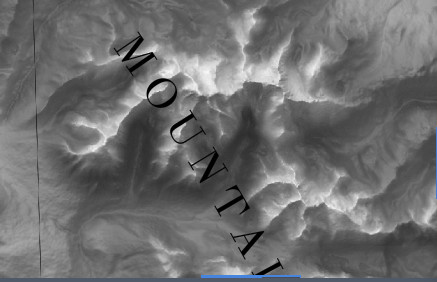
The classic, or perhaps I should say default solution, is to buffer the text in white. This works fine, in that you can read the text more easily, but it’s a crude solution and it’s a bit loud. It lacks subtlety. 
A somewhat more elegant solution is to have the buffer match the background colour. In this example the text stretches across many background colours, so no matter what colour you select it’ll be a compromise. Still, it looks better than white. The problem is that across the map as a whole each piece of text will probably get a different buffer colour, depending on what is dominant in its background.
What we really want is a way to pick up the background colour for each pixel, and colour the buffer that way. We can actually approximate this by using the blend mode of Screen.
Screen is the opposite of Multiply. Where Multiply transfers dark values onto another layer, Screen uses dark values to lighten another layer.
In this case, you set your buffer to something fairly dark, like 80% grey. Then set the blend mode of the buffer to Screen. You get this.
Here the buffer colour echoes the underlying colour. The buffer around the T is orange-y, while the buffer around the O is grey. The buffer for the M uses both colours.
How would you do this in QGIS and Inkscape?
For text labels displayed in QGIS, this impressive piece of software can do this automatically. On the Buffering tab of the Labels dialogue, check Draw text buffer and specify an 80% grey for the buffer fill. (Note that 80% grey is RGB 51/51/51, HSV 0/0/20, or HTML #333333.)
Then set the blend mode to Screen. There are a couple things to note. One is that the sample shown will look ghastly; you can ignore that. The other is that the blend mode of the label is different from the blend mode of the buffer. The label itself probably has the default blend mode of Normal, and this can be checked on the Text tab.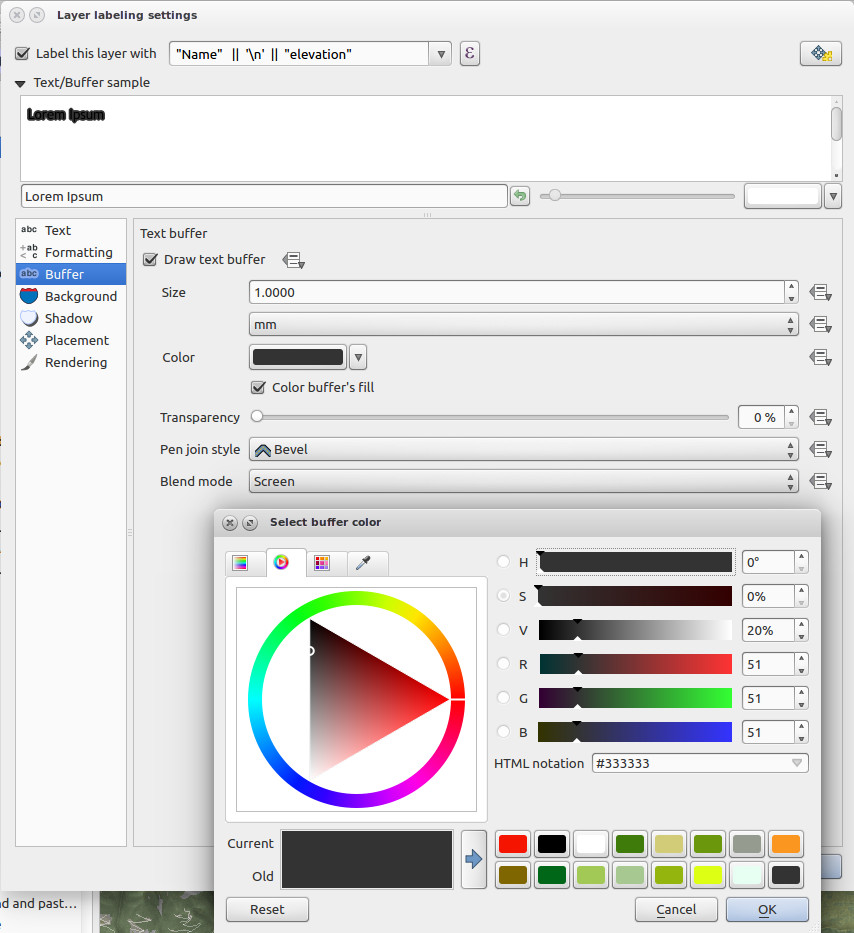
In Inkscape, where you might be doing more complex text, text set on curved paths with adjusted kerning, you can also do this. Blend modes in Inkscape are applied to an entire layer, so you can’t give one piece of text a different blend mode than another. But by introducing a special layer that has a blend mode of Screen just beneath your text, you can put the buffers there.
The procedure goes something like this:
- Create a new layer below your text layer and set its blend mode to Screen.
- On the text layer, select your text and duplicate it with Ctrl-D.
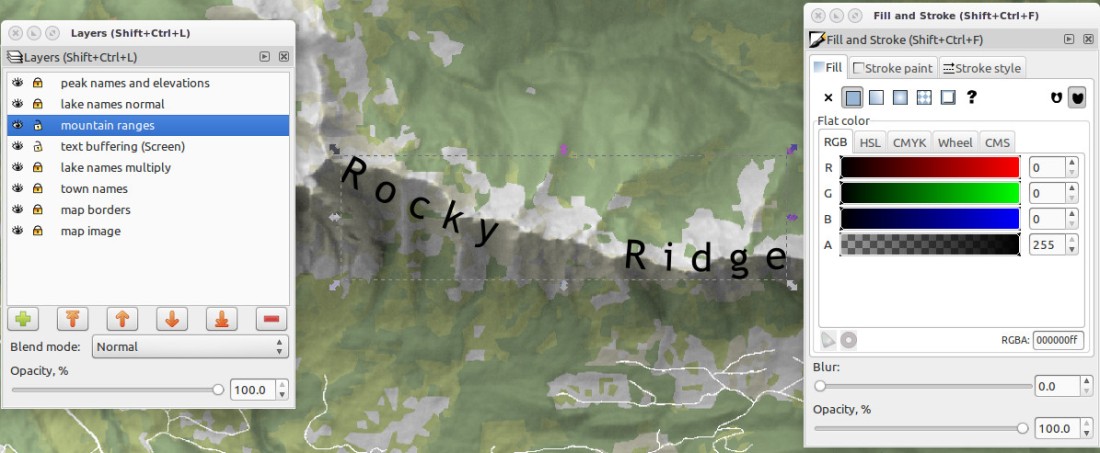
- Turn on Stroke for the duplicated text. (Text normally has fill but no stroke) and set the stroke colour to 80% grey. (You can do both of these steps simultaneously with a shift-click on the 80% grey swatch in the Palette at the bottom of the screen). Set its width as you see fit (1mm in this example). It should look pretty ghastly.
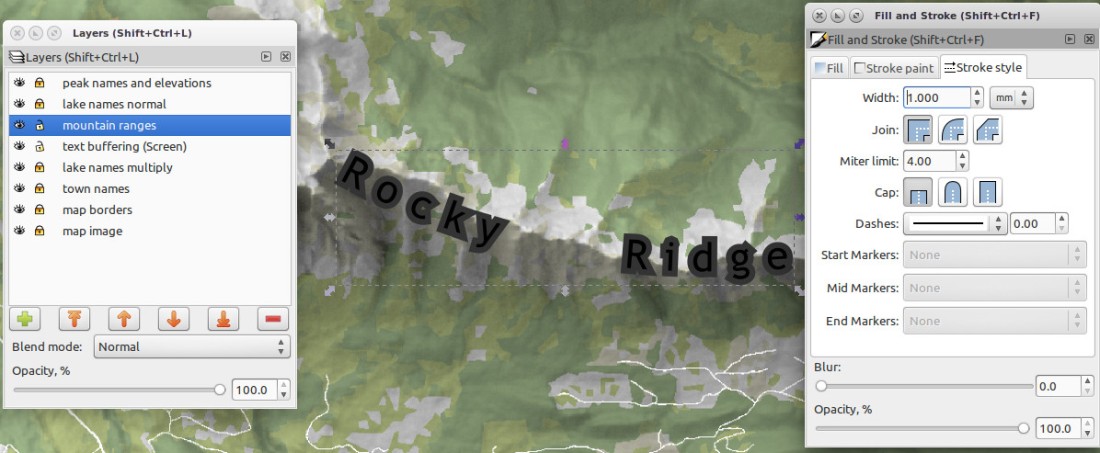
- Press Shift-PgDown to send that duplicate piece of text to the layer below, the layer with blend mode of Screen. It should now look pretty nice.
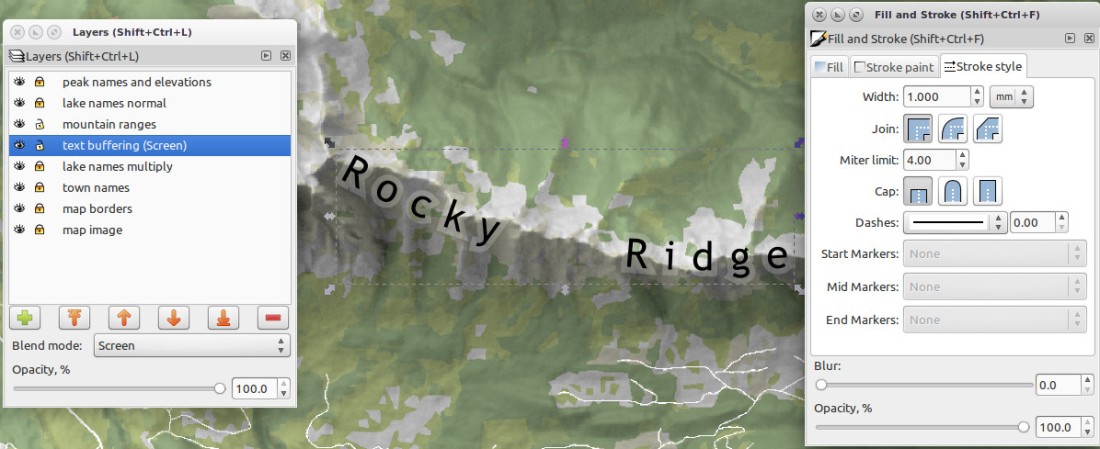
I should point out one disadvantage of this two-layer approach: you can’t group the text with its buffer, a practice I normally do because it makes it easier to move labels around later.

Muy buena información, de gran ayuda al momento de etiquetar, agregar texto, la toponimia en un mapa
Very good information, great help when tagging, add text, place names on a map
LikeLike